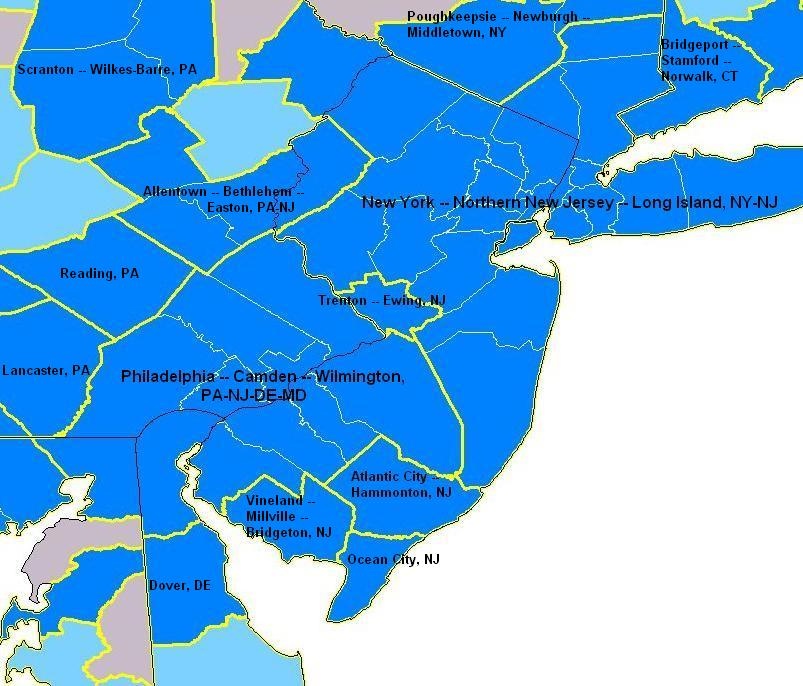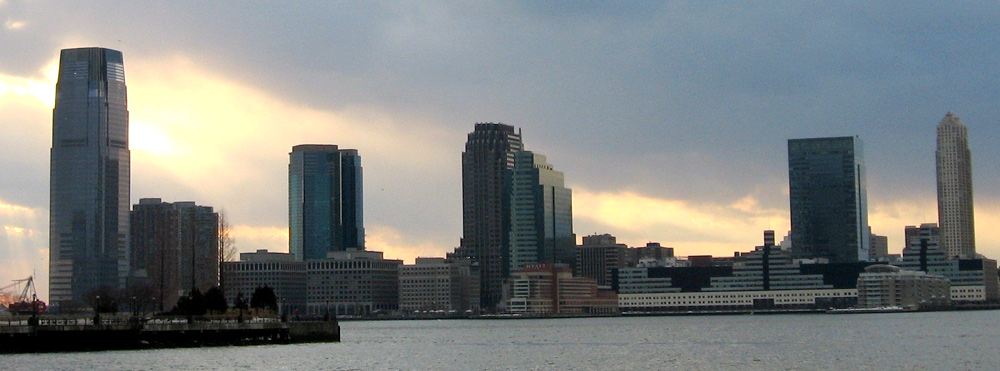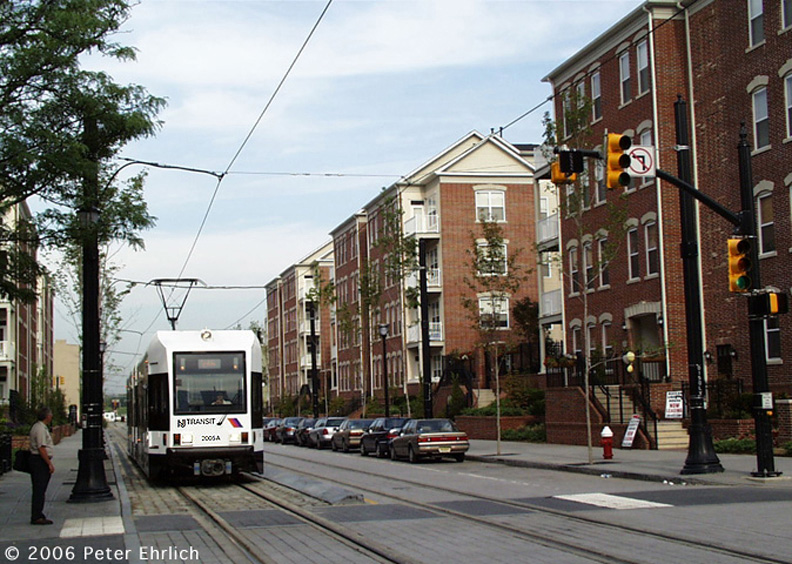New Jersey Future Blog
Metro Areas Are the Key to America’s – and New Jersey’s – Future Economic Prosperity
April 22nd, 2010 by Tim Evans

Every NJ county is in a metropolitan area
In an article in the Wall Street Journal (“The Metro Moment”) last week, the Brookings Institution’s Bruce Katz drew attention to the importance of metropolitan areas to the nation’s economic activity:
The real heart of the American economy lies in the top 100 metropolitan areas—from New York City to Modesto, Calif.—that take up only 12% of our land mass, but harbor two-thirds of our population and generate 75% of our gross domestic product.
The main point of Katz’s article was to focus on the difficulty of confronting the challenges facing these large economic engines in the absence of metropolitan-level units of government that can make and enforce critical decisions about infrastructure investment, taxation, transportation policy, housing policy, etc. Instead, most metro areas are partitioned into many small, competing jurisdictions that are largely a relic of an era when people lived their lives more locally, when traveling from one end of a modern multi-county metro area to the other would have been an entire day’s journey. Such a dispersed, decentralized power structure does not lend itself to coordinated action.
New Jersey is an entirely metropolitan state (a distinction it shares only with much-smaller Rhode Island) in that every one of New Jersey’s 21 counties is part of one metro area or another. In fact, all but four counties are contained in one of the top 100 metros that Mr. Katz focused on:
- 12 northern and central New Jersey counties are part of the New York metro area, the nation’s largest — Bergen, Passaic, Sussex, Essex, Hudson, Union, Morris, Middlesex, Somerset, Hunterdon, Monmouth, and Ocean; together, these counties account for 73 percent of New Jersey’s population
- 4 southern NJ counties — Burlington, Camden, Gloucester, and Salem — are part of the Philadelphia metro area, the #5 most populous metro area in the country; these counties make up another 15 percent of the state’s population
- Warren County is part of the #62 metro area, Allentown–Bethlehem–Easton, PA-NJ
- Mercer County constitutes the Trenton–Ewing metro area, #137 in population
- Atlantic County constitutes the Atlantic City–Hammonton metro area, #166
- Cumberland County constitutes the Vineland–Millville–Bridgeton metro area, #249
- Cape May County constitutes the Ocean City, NJ metro area, #349
If any state has an interest in ensuring that metropolitan areas can act in a coordinated manner to respond to the challenges they will face in an increasingly global economy, New Jersey is it. With 90 percent of its population living in one or another of the country’s 100 largest metropolitan areas (and the other 10 percent living in smaller metros), the future of New Jersey is essentially the future of metropolitan America.
Related Posts
Tags: Metropolitan issues, Regionalism
















